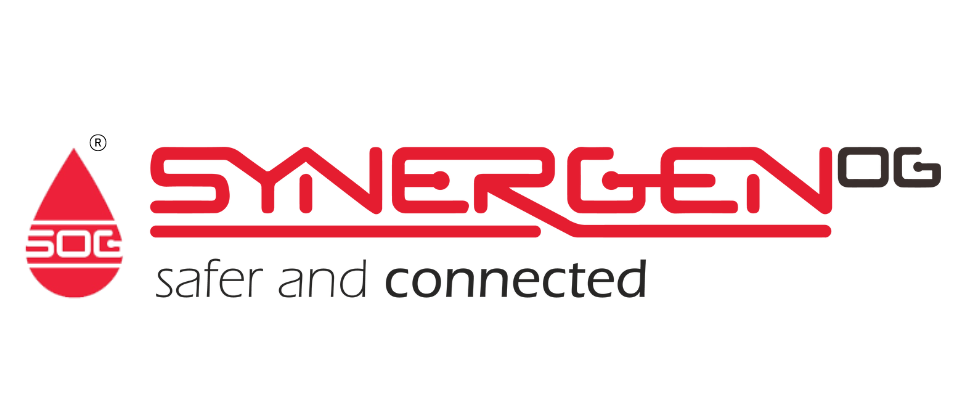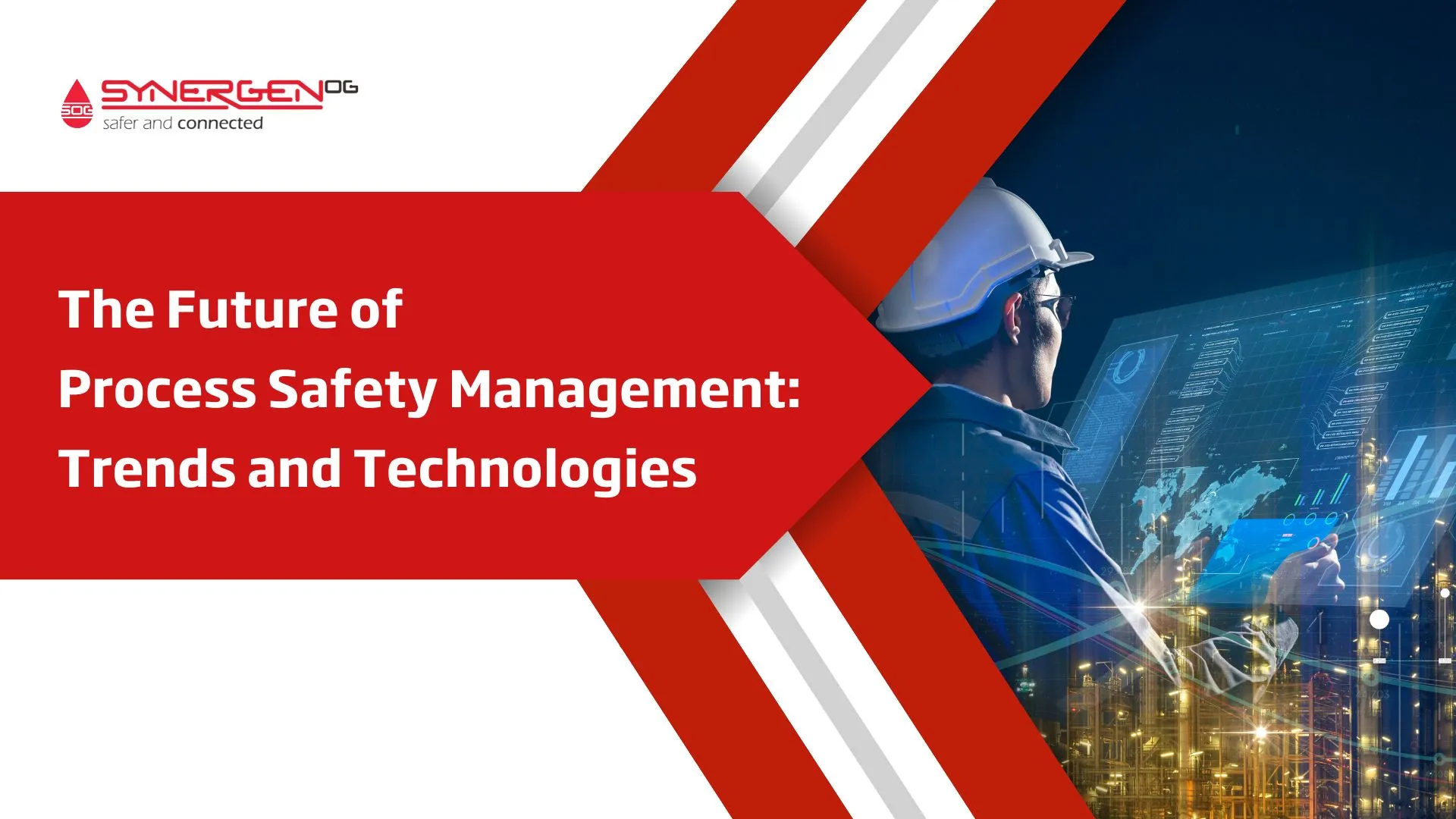| Summary: The article discusses the future of Process Safety Management (PSM) in industrial settings, focusing on emerging trends and technologies. It explores the shift from reactive to proactive safety management, driven by automation, AI, and digital twins. Benefits include improved efficiency and minimized human error, with a focus on holistic risk management and sustainability. The article also addresses challenges and provides strategies for organizations to transition effectively. |
Process Safety Management (PSM), a widely accepted and utilised approach within the industrial sector, primarily deals with preventing and mitigating catastrophic incidents such as fires, explosions, and chemical leaks that could occur during process handling at industrial plants.
In the industrial environment, PSM is not just a regulatory requirement but a vital asset for the smooth operation of any facility. Effective PSM is also a key driver of improved performance in safety through greater operational discipline, reduced downtime, and increased reliability.
However, the landscape of industrial operations and PSM is rapidly changing as we transition from traditional to dynamic and technologically advanced practices. Emerging technologies like artificial intelligence (AI), machine learning (ML), digital twin technology, and advanced data analytics promise to revolutionise traditional PSM practices.
Transitioning to these latest PSM practices calls for re-evaluating the current approaches while embracing these promising technologies for a safer, more efficient, and more sustainable industrial landscape.
In this article, we will explore the expected shape and influence these changes will have on PSM and its role in future industries.
Evolution of Process Safety Management
The History of PSM Evolution
The journey of Process Safety Management (PSM) has its roots in the mid-20th century, stemming from various catastrophic events that highlighted the need for better management of processing industries’ operations.
Initial practices were largely reactive, focusing on accident investigation and fault rectification post-incident. However, the Bhopal catastrophe in India in 1984, which led to the death of thousands of people, changed the industry’s approach. The horrifying event paved the way for the formulation of OSHA’s PSM standards in the U.S. in 1992, which further solidified the foundation of PSM practices, shifting from reactive to proactive safety management.
Factors contributing to the evolution of PSM
1. Technological Advancements
The evolution of PSM hasn’t happened in isolation; several factors have contributed to shaping its trajectory. Technological advancements in industrial automation, data collection, and analysis have significantly influenced the move towards more sophisticated, data-driven PSM strategies.
2. Changing Industry Needs
Another key driver of change includes regulatory developments and stricter compliance requirements ensuing from learnings of past industrial disasters. Additionally, lessons learned from near-miss incidents and incidents at other sites have also influenced the evolution of PSM procedures.
3. Increased Focus on Safety and Risk Mitigation
More recently, there has been an increased focus on safety and risk mitigation in the industry. Since accidents risk human life, harm the environment, and impact business continuity and reputation, companies have begun investing more heavily in PSM.
The aim is to predict and prevent incidents before they occur using various tools such as risk assessments, safety audits, and training programs. This proactive approach to safety, emerging technological solutions, and rigorous regulatory standards are set to catalyse the evolution of PSM further, steering us towards a safer industrial future.
Process Safety through Automation and Digitalization
Automation and digitalization are increasingly critical in enhancing process safety in various industries nowadays. Implementing these cutting-edge technologies allows for improved efficiency, increased product quality, and enhanced proactive safety measures through systems like safety instrumented systems.
Process Digitalization
One aspect of digitalisation, known as Process Digitalization, is seeing wider acceptance across the globe. This involves integrating digital technologies into process operations for more significant efficiency, enhanced product quality, and improved process safety.
System Automation
Moreover, automation can also contribute to improved safety measures. System automation can help mitigate human error and enhance critical aspects of process safety management, such as strengthening risk assessments and mitigating risk levels by identifying potential hazards before they become an issue.
The digital era has brought about a wealth of data, which can be utilised effectively through automation for Fault Detection and Diagnosis (FDD) in chemical processes. These technologies can enhance process safety and abnormal situation management in industries like petroleum manufacturing.
In sum, automation and digitalization are revolutionizing process safety by providing the tools and capabilities to predict, monitor, and manage safety aspects more proactively and efficiently, leading to safer and more reliable operations.
Key Components of Future Process Safety Management
The future of Process Safety Management (PSM) is underpinned by several key components that reflect evolving technologies and a shift towards a more comprehensive approach to safety:
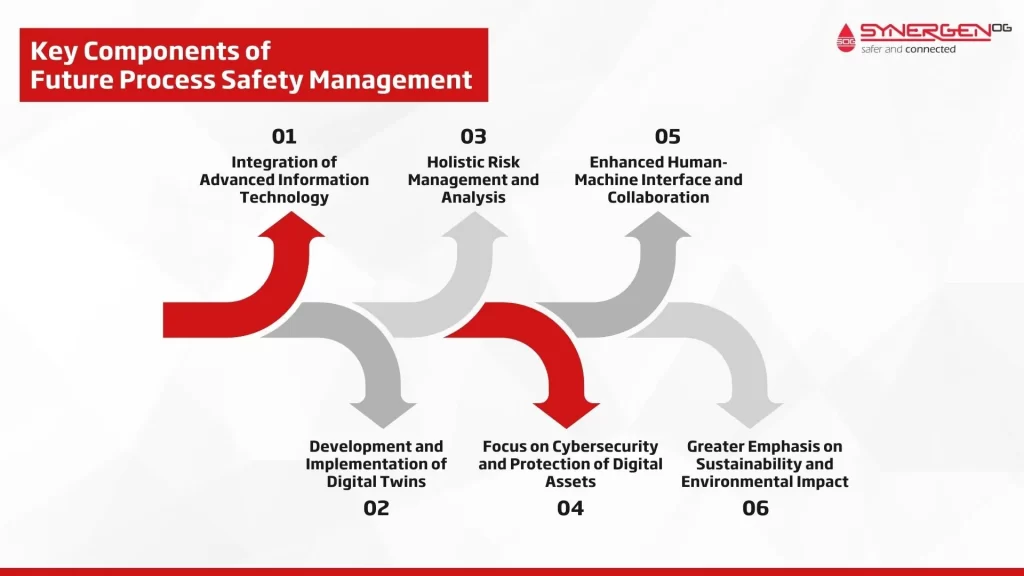
#1. Integration of Advanced Information Technology
Emerging technologies such as Artificial Intelligence (AI), Machine Learning (ML), and Big Data analytics are set to revolutionise PSM.
AI and ML can facilitate predictive analysis and maintenance, which can foresee potential equipment failures and process disruptions, aiding in proactive intervention.
Meanwhile, Big Data analytics can handle and analyse massive amounts of process data for valuable insights and decision-making.
#2. Development and Implementation of Digital Twins
The concept of digital twins, virtual replicas of physical systems, is making waves in industrial practice. These digital counterparts can be used to simulate and predict system behaviour under various scenarios, leading to enhanced problem-solving and planning efforts.
Their use in PSM provides real-time actionable insights and forecasts potential hazards, thus enabling preventive actions.
#3. Holistic Risk Management and Analysis
Traditional PSM has always involved risk management, but future PSM aims for a more holistic approach. It focuses not only on technical aspects but also on organisational and human factors contributing to risk.
Predictive risk management models integrated with AI will enable real-time risk assessments, proactively mitigating threats.
#4. Focus on Cybersecurity and Protection of Digital Assets
The integration of IT in PSM also entails a growing vulnerability to cyber threats. Hence, cybersecurity becomes an integral part of future PSM, ensuring the safety of digital assets, data confidentiality, integrity, and availability.
#5. Enhanced Human-Machine Interface and Collaboration
Future PSM systems will promote deeper human-machine collaboration. Technological tools will aid human decision-making, while operators’ expertise will provide the necessary checks and balances for automated systems. Such synergy will result in a system that minimises human error without fully eliminating the human touch.
#6. Greater Emphasis on Sustainability and Environmental Impact
As the discourse around sustainability becomes more prominent, PSM systems of the future will reflect this transformation. PSM will play a crucial role in minimising industrial processes’ environmental impact, reducing waste generation, promoting energy efficiency, and ensuring the overall sustainability of facilities.
Benefits of Focussing on New PSM Practices
As we move towards more advanced and integrated PSM practices, several key benefits emerge:
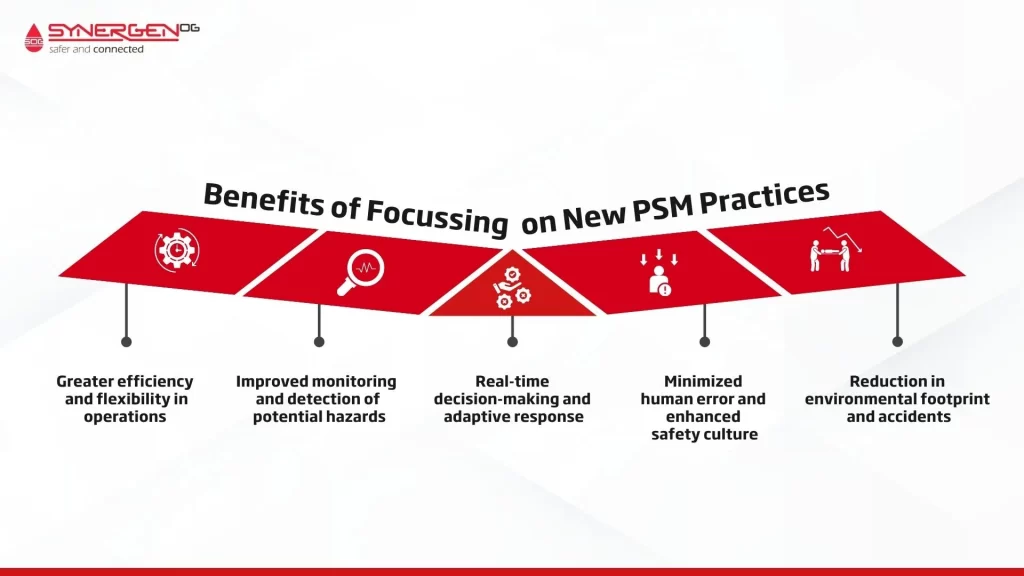
- Greater efficiency and flexibility in operations: AI, ML, and data analytics enable facilities to optimise processes better, enhancing overall efficiency while adapting easily to changes in operating conditions.
- Improved monitoring and detection of potential hazards: Advanced technologies such as digital twins and predictive analysis can identify potential hazards, equipment failures, and process incidents before they occur, allowing preventive actions to be taken.
- Real-time decision-making and adaptive response: With real-time data analysis, future PSM practices will enable faster decision-making and adaptive response, minimising process disruptions and reducing downtime.
- Minimized human error and enhanced safety culture: Increased automation and better human-machine collaboration reduce the likelihood of human error while promoting a safety-conscious work environment across the organisation.
- Reduction in environmental footprint and accidents: By identifying and mitigating risks proactively and prioritising sustainability, future PSM practices will contribute to minimising the environmental impact of industrial processes and further reducing the number of accidents in the workplace.
Challenges and Barriers to Implementing New Technologies in Process Safety Management
The transition towards future PSM practices is not without its challenges, which can affect its effective implementation:
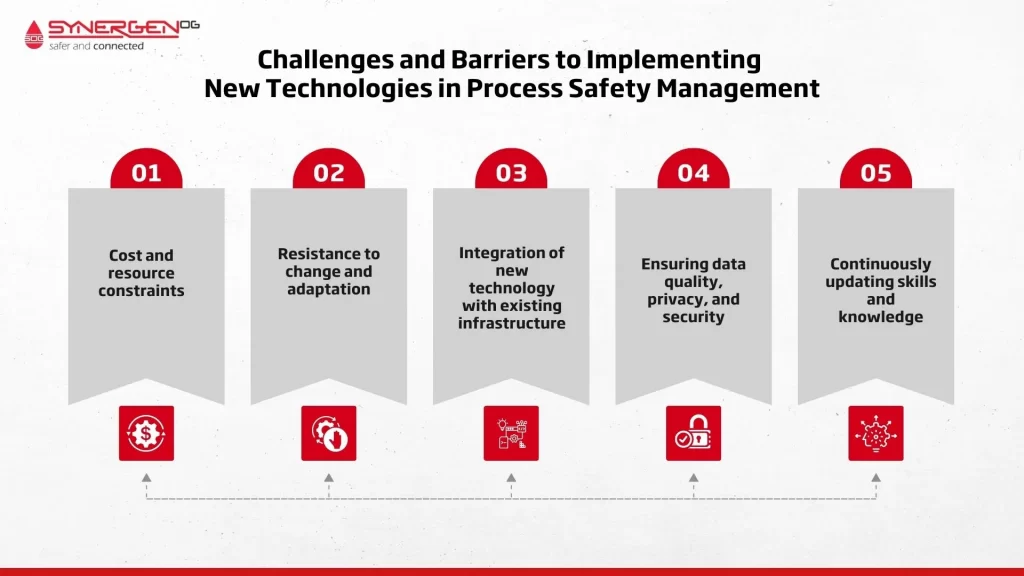
- Cost and resource constraints: The adoption of advanced technologies entails significant financial investments and may require additional resources, which can be a significant barrier for some organisations.
- Resistance to change and adaptation: Change management is always challenging, and resistance from employees, especially when it involves changing long-established practices, can hinder the transition to future PSM practices.
- Integration of new technology with existing infrastructure: Merging advanced technologies with legacy systems can pose technical challenges, and system compatibility issues may lead to operational disruptions.
- Ensuring data quality, privacy, and security: With data forming the bedrock of future PSM, ensuring its quality and protecting it from cyberattacks or unauthorized access can be a daunting task.
- Continuously updating skills and knowledge: As technologies evolve rapidly, staff skills and knowledge are constantly needed to be upgraded to ensure they are proficient in using the new systems and tools.
How can organisations transition from traditional PSM practices to future PSM?
Let’s look at some practical steps and strategies to transition to new technological PSM practices.
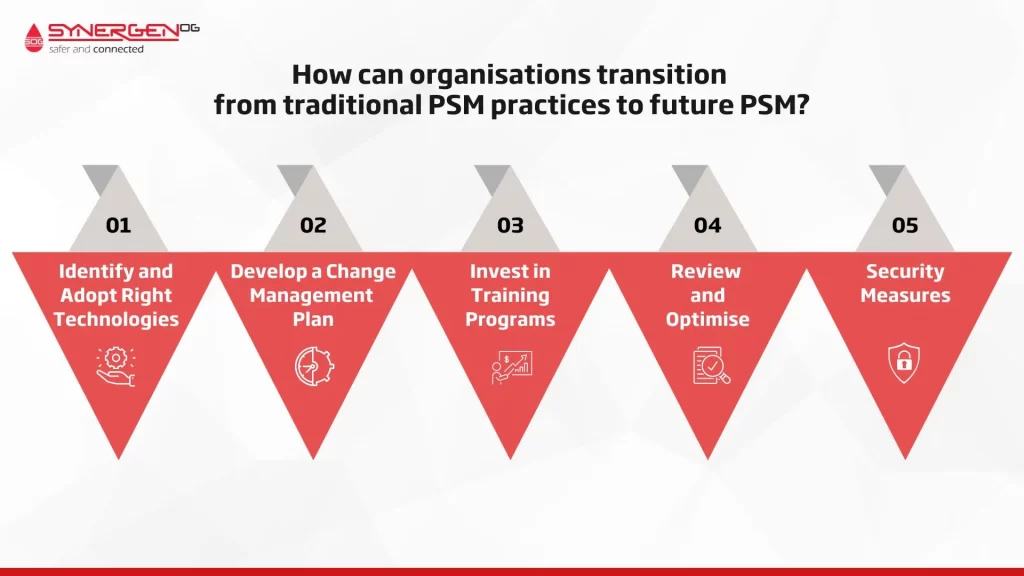
1. Identify and Adopt Right Technologies
The first step in the transition is to identify the right technology that suits the organisation’s specific requirements – be it AI, machine learning, digital twins, or data analytics. Once recognised, adopt these technologies, and integrate them with existing systems.
2. Develop a Change Management Plan
Develop a comprehensive change management plan to tackle resistance to change. This plan should include communicating the benefits of the transition, training programs to educate employees on how to use new technologies, and support strategies to help them navigate the transition.
3. Invest in Training Programs
Training staff on the new PSM practices is crucial. You need to invest in relevant process safety training programs that educate employees on using the technology and how it can improve their work efficiency and safety measures in the organisation.
4. Review and Optimise
Review the process regularly to uncover any glitches. Optimize the new systems based on feedback and continuously look for improvements. This includes ongoing updates to procedures, practices, and training programs.
5. Security Measures
Ensure adequate security measures are in place to protect sensitive data. Develop a solid cybersecurity plan which includes regular system updates to protect against threats.
By efficiently deploying these steps and strategies, an organisation can effectively navigate the transition from traditional PSM practices to future PSM.
Case Studies: Industry Leaders Implementing PSM Trends & Technologies
Case Study #1: Shell
Shell, a multinational energy company, has successfully implemented advanced PSM practices using AI-enabled predictive maintenance to prevent unexpected equipment failure at its petrochemical plants. Through a partnership with C3 AI, Shell leverages Machine Learning and AI solutions that analyse vast amounts of operational data, improving efficiency and reducing maintenance costs.
Lessons from this case study emphasise the importance of integrating new technologies with domain expertise and adapting them to specific industrial contexts.
Case Study #2: Dow Chemical Company
Dow Chemical Company is a pioneer in implementing innovative PSM practices. Dow leverages big data analytics and AI-based systems to build risk profiles for each asset class in its global factories. By identifying possible threats in real-time, the PSM system provides Dow with a preventative and proactive approach to ensure safety in its operations.
The company’s success story highlights the importance of continuous improvement when adopting new technologies and that operational excellence becomes achievable by actively monitoring risks and addressing them accordingly.
Case Study #3: BASF
BASF, a German chemical company, has successfully adopted digital twins technology for better process safety and plant efficiency. By creating simulated models of their production facilities, BASF can analyse system behaviour under various conditions. These digital replicas enable the company to optimize processes, improve facility maintenance, and minimize risks.
The key lesson derived from this initiative is that leveraging digital twins not only enhances safety but also contributes to increased operational efficiency and cost savings.
These case studies emphasize the importance of strategic planning, robust implementation, and continuous improvement when transitioning to future PSM practices. Successful integration of advanced technologies requires organisations to be adaptable and open to change, while still upholding the core tenets of process safety management.
How SynergenOG can help you make a PSM review with the latest trends and technologies?
SynergenOG has the expertise to facilitate Process Safety Management (PSM) reviews while incorporating the latest trends and technologies. Using our comprehensive understanding of PSM, as outlined in our Process Safety Management Guide, we are capable of addressing all aspects of process safety from hazard identification to employee training, incident investigation, and reporting.
Our approach involves state-of-the-art technology that provides top-notch results helping companies anticipate and address potential risks in real-time.
ActSYN™, eSAFETYCASE™ and SynAC&E are examples of our software solutions that help industries operate their high-end processes faster, more efficiently and securely.
We even offer an online PSM course, ePSM via our SOG Academy, to help professionals understand and implement PSM principles effectively.
Furthermore, SynergenOG identifies and discusses emerging technologies revolutionising the energy sector through digital disruption. Our insights on these technologies can be leveraged to ensure that a PSM review is comprehensive and aligned with the latest tech trends impacting the industry.
In conclusion, using our technical expertise, comprehensive PSM knowledge, and an appreciation for the latest trends and technologies, we can help conduct a thorough PSM review that is modern, efficient, and capable of mitigating risk effectively.
Reach us for a business enquiry.
Winding Up
Remember, embracing the latest trends and technologies not only improves safety measures but also contributes to the overall efficiency and success of your organisation. By continuously staying updated, you can ensure your processes remain aligned with industry best practices and regulatory requirements.
Implementing these advancements might require investment and adjustments, but the long-term benefits in terms of safety, productivity, and reputation are well worth it. Stay informed, stay proactive, and prioritise the well-being of your workforce as you navigate the ever-evolving landscape of process safety management.
FAQ - Future of PSM Trends
- How does future PSM address the growing issue of cybersecurity?
Future Process Safety Management technologies can address cybersecurity through the integration of advanced AI-powered threat detection and prevention systems, which allows constant surveillance for anomalies and suspicious activities in network activities by taking a proactive approach to cybersecurity.
- What is the role of digital twins in PSM?
The role of digital twins in PSM is important as they provide virtual replicas of physical systems that enable simulation and prediction of system behaviour under various scenarios. Digital twins can monitor, detect, and analyze potential hazards, leading to improved safety and decreased risk of accidents.
- What role will AI play in Process Safety Management in the future?
In the future of PSM, AI can use primarily to predict potential risks, facilitate real-time decision-making, and improve maintenance procedures. It allows for the analysis of large data sets to spot patterns and predict equipment failures or disruptions in operations, thus improving efficiency and safety. Moreover, AI can aid in making real-time decisions by providing actionable insights, greatly reducing the risk of human error.
- What is the future trend in process safety?
The future of process safety is moving towards increased use of digital technologies, such as AI, IoT, advanced analytics, robotics and digital twins for real-time risk assessment and predictive maintenance.
